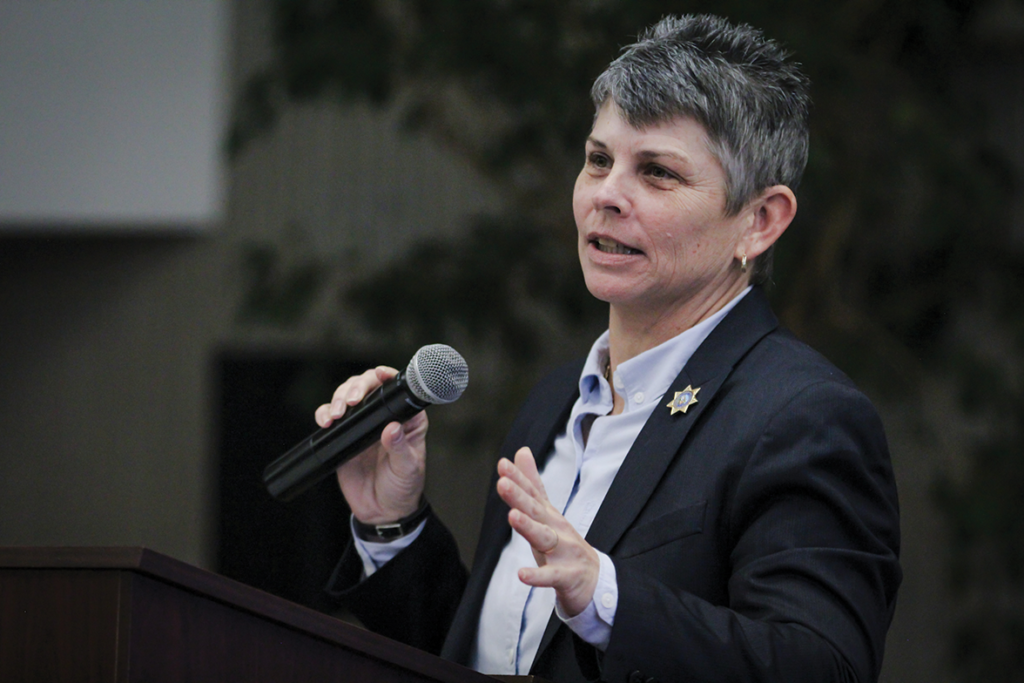Brenda Crowding looks back at 20-year CDCR career
To encourage employees to expand their knowledge and gain new experiences, CDCR/CCHCS GARE Steering Committee is highlighting our diverse workforce.
For 20 years, Brenda Crowding worked for CDCR. Retiring in late December 2020, she took time to discuss her CDCR career.
Why did you join the Department?
I joined the Department in 2000 as a Parole Agent in Southern California. I had been working in human services for about 13 years prior, mostly in county funded substance abuse treatment facilities and I was looking for a change. I met quite a few parole agents over the years and one in particular encouraged me to apply.
What would you consider a highlight of your CDCR career so far?
Just one? It’s hard to pinpoint just one because there have been many. Working for CDCR has provided me the opportunity to engage in numerous and meaningful projects with wonderful people across the state.
Some of the standouts have been changing the way we view parole supervision, being a member of the planning committee for the Women Working in Corrections and Juvenile Justice conference, and of course, as a steering committee member of the Government Alliance on Race and Equity (GARE).
What do diversity, equity, and inclusion mean to you? Why are they important?
The concepts of diversity, equity and inclusion are critical to the credibility and vision of our Department and benefit us all. But they remain concepts if not followed by policy, applying an equitable lens to our missions, and true implementation.
When achieved, these concepts cause all employees to feel accepted, valued, and able to contribute. When employees feel accepted and valued, they are also happier in their workplace, which leads to a reduction in conflict and increased retention.
Diversity in the workplace ensures a variety of different perspectives and increased creativity. The Department’s involvement in GARE has been an amazing commitment to equity and I have been honored to be a member of the GARE Steering Committee.
Why do you think gender equity and race should be addressed in the workplace?
Since many of our governmental systems have been historically rooted in systemic, structural and generational racism, to not address ways in which we can right the wrongs continues to support those systems. In other words, status quo is harmful. To ensure our Department is recruiting, hiring, retaining and promoting an inclusive, creative, and talented workforce, an equitable lens has to be applied.
How have you counteracted biases? (Either personal biases or biases you have encountered in others you have met.) Why is it important to counteract biases?
First of all, it is important to remember that we all have biases. Growing up in the greater Philadelphia area, which remains a segregated city, I have spent a lifetime counteracting my personal biases and challenging others to do the same.
One of my greatest life experiences and honors was when I completed my master’s degree at Lincoln University in Pennsylvania. Lincoln is a Historically Black College and University (HBCU), and it was a time for me to address my white privilege and implicit biases with incredible teaching and support from my classmates and professors.
To be a true ally for equity, I recognize the work is mine, it is never done, and it is a constant balance of giving voice to those who are marginalized and knowing when to be that voice.
CDCR and CCHCS joined the Government Alliance on Race and Equity (GARE) in its commitment to achieving equity. This path forward will provide our departments with the strategies and tools needed to advance concepts of diversity, equity, and inclusion.
For more information on how you can join this effort and be a part of the GARE Ambassador Program, visit www.cdcr.ca.gov/gare or email GARE@cdcr.ca.gov.
By Don Chaddock, Inside CDCR editor, Office of Public and Employee Communications.
Learn about job vacancies at CDCR/CCHCS.
